Fashion

Canadian Critical Luxury Studies
Canadian Critical Luxury Studies: Decentering Luxury is a dynamic new contribution to the study of luxury. The essays in this collection challenge Euro- and US-centric perceptions that bind luxury to either a colonial past or a consumerist present. The book announces a new collective of thinkers who focus on Indigenous and Canadian instances of luxurious production experiences and sites to propose a new definition of luxury that includes a plurality of regional practices highlighting that Canadian luxury centres on community and connection.
Each of the interdisciplinary contributions analyse luxury from different vantage points to understand why luxury has succeeded or failed in the Canadian context. From the history of the fur trade to the latest Indigenous fashion movement from the T. Eaton Co.’s 1920s Made-in-Canada campaign to the on-again-off-again Toronto Fashion Week from Vancouver public art commissions to Montréal’s future-forward fashiontech sector the essays in this volume explain what makes and breaks Canadian luxury.
These original case studies redefine luxury for Canada – a former colonial possession and contemporary second-tier cultural market – and lay the foundation for the critical study of luxury in other historically secondary geographies that produce consume and circulate material and symbolic luxuries. The collection ultimately challenges old myths and the mystique surrounding European luxury to give it a new lustre that shines light on those actors who have been historically excluded from its privilege: Indigenous peoples immigrants the working classes. It sheds light on the reasons that conventional expressions of luxury may fail in secondary markets and offers guidance for fashiontech innovations that invest in the individual without imposing dehumanizing values of efficiency and rational measurement.
Although focused on the Canadian context the book will appeal to an international audience of scholarly and industry readers. Its interventions about broadening the focus of luxury studies beyond traditional sites in Western Europe make it an important text for global audiences. It offers an alternate reading of conventional luxury histories sites and practices; in doing so it models a national approach to luxury that can be applied to alternate national markets.
Jessica P. Clark is a historian of Britain and empire with a focus on gender consumption and labour and an associate professor of history at Brock University Ontario Canada. Nigel Lezama is an associate professor of French studies at Brock University and works at the intersection of fashion luxury literary and cultural studies.
Contributions are drawn from a number of fields including but not limited to Indigenous studies museum studies business management cultural studies fashion studies technology and industry. Contributors include Kathryn Franklin University of Toronto; Rebecca Halliday Toronto Metropolitan University; Riley Kucheran Toronto Metropolitan University; Valérie Lamontagne Concordia University; Marie O'Mahony Ontario College of Art and Design; Julia Polyck-O'Neill York University Ontario.
This is a primarily an academic book. It is of great relevance to scholars within the subfield of critical luxury studies as well as scholars of consumer and commodity cultures more broadly and those working or interested in Canadian studies media studies critical studies and historians.
Researchers and postgraduate students studying luxury as well as those studying the history of the development of Canada its colonial past and the marginalization of Indigenous people and with the development of fashion technologies will also find it useful.
Academics and practitioners concerned with the development of city and nation branding will find the book of value.
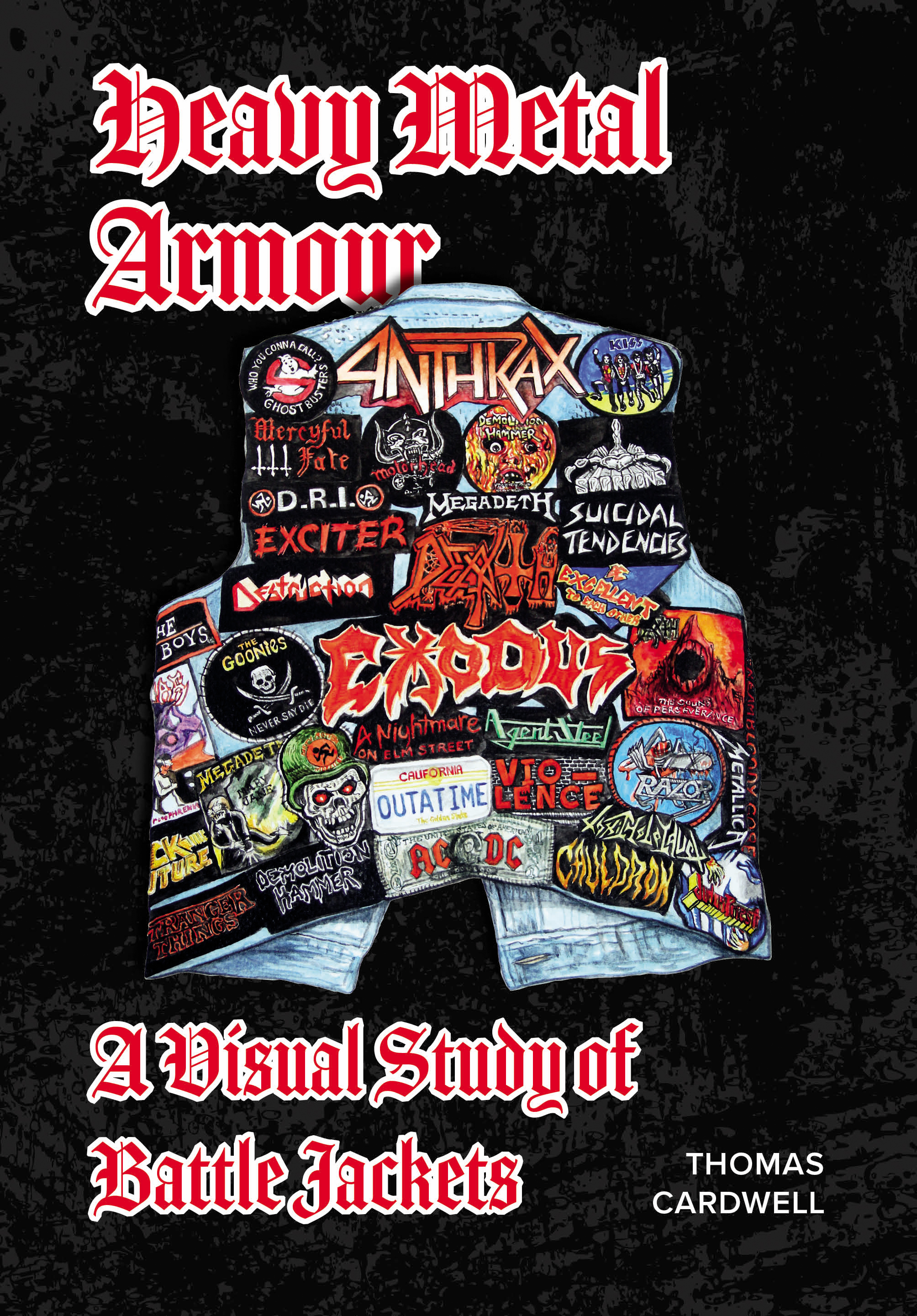
Heavy Metal Armour: A Visual Study of Battle Jackets
The first of its kind – original unique and beautifully illustrated by the author. Engagingly written it will appeal to fans and academics alike.
A lavishly illustrated study of the heavy metal battle jacket in a historical and cultural context with a unique approach to analysis and interrogation of form and style through painting practice and theory.
Since the 1970s customized denim 'battle jackets' have been worn by heavy metal fans to signify their devotion to the music and subcultures of metal. Embellished by the wearers with patches badges and studs these jackets are works of art that communicate the values of metal to the world at large. This book features a series of detailed paintings that visually document examples of jackets alongside photographic portraits of the fans that wear them.
The accompanying chapters describe the significance of battle jackets in metal scenes and trace a lineage of customized clothing starting in the Middle Ages. Connections are made with a wide range of historic and contemporary artworks suggesting a broad context within which to more fully appreciate the significance of the jackets. The methodology spans a range of disciplines from art theory to ethnography and subcultural studies and the discussion is informed by responses from a series of interviews conducted over the years with metal fans.
The book has a highly original focus and the author’s approach to the subject is unique. It reaches across a range of fields: the history and cultural context of heavy metal music style and dress; art history and practice particularly painting; subcultural studies; fashion and dress; music graphics branding and marketing.
Tom Cardwell is an artist and researcher specialising in contemporary painting customized clothing and heavy metal subcultures. He is senior lecturer in painting at Camberwell University of the Arts London.
It will appeal to readers with an interest in metal subcultures; fashion style and dress; music branding and identity; contemporary art theory and practice. The writing style and content is relaxed engaging and will be of interest to a wider casual readership with an interest in popular culture and the arts.
A useful resource for academics and students interested in heavy metal customized clothing/DIY subcultures painting and visual arts. Could appeal to undergraduate as well as postgraduates and scholars in these fields and a broader interest in visual culture.

Fashion Knowledge
This new edited collection assembles academic essays and intellectual activism equally next to visual essays and artistic interventions and proposes a different concept for fashion research that eschews the traditional logic of academic fashion studies. It features acclaimed designers artists curators and theorists whose work investigates the multi-faceted debates on the rise of practice-based research in fashion.
The book sets out to explore current issues in fashion research with a particular focus on both methodology and expansion of the field to encompass overlooked voices and narratives. It has a particular concern with the relationships between theory and practice and with how knowledge is created and disseminated in fashion studies. It is an excellent and really valuable contribution to the field at a point both when fashion studies is expanding and when the fashion industry is at a crucial point of change.
Some of the contributions were originally presented at a symposium hosted by the Austrian Center for Fashion Research ‘TALKSHOW: The politics of practice-based fashion research’ at Vienna’s Museum of Applied Arts curated by Wally Salner. The symposium brought together a group of fashion scholars designers educators and practitioners to explore critical contemporary fashion (research) practices and to investigate critical fashion knowledge between theory and practice beyond assumed disciplinary and epistemological boundaries. Many contributions in this volume were initially presented at that symposium while others are testimonies of international debates that were part of the research activities of the Austrian Center for Fashion Research a research project funded by the Austrian Federal Ministry of Science Research and Economy led by Elke Gaugele.
The book is structured into three sections: Fashion Knowledge Practice-Based Fashion Research and Sites of Fashion and Politics. Contributions look at new forms of fashion knowledge that are forming with and along shifting fashion practices practice-based fashion research and sheds light on different sites and entanglements of fashion and politics in distinctive contemporary and historical moments of de/colonization anti/racism and anti/globalization.
Elke Gaugele is cultural anthropologist and professor of fashion styles and contextual design at the Academy of Fine Arts in Vienna Austria. Monica Titton is a sociologist fashion theorist and senior scientist at the fashion design department of the University of Applied Arts Vienna Austria. Other contributions are from Elke Bippus Astrid Engl Jojo Gronostay Ruby Hoette Bianca Koczan Priska Morger NCCFN Wally Salner Andreas Spiegl José Teunissen Lara Torres Carol Tulloch and Maria Ziegelböck
Readers will be academics practitioners designers artists curators museums theoretical scholars lecturers practice-based researchers students and practitioners at all levels in the fields of fashion textile art and design.
This new book with its original focus on practice-based research will be useful for a general and academic readership alike and to all those working within the field of fashion studies including those with a theoretical focus fashion practitioners and those working within innovative pockets of the fashion industry.

Clothing Goes to War
Clothing Goes to War: Creativity Inspired by Scarcity in World War II is the story of clothing use when manufacturing for civilians nearly stopped and raw materials and workers across the globe were shifted to war work. Governments mandated rationing programmes in many countries to regulate the limited supply in hopes that the burden of austerity would be equally shared. Unfortunately as the war progressed and resources dwindled neither ration tickets nor money could buy what did not exist on store shelves.
Many people had to get by with their already limited wardrobes often impacted by the global economic depression of the previous decade. Creativity courage and perseverance came into play in caring for clothing using handicraft skills including sewing knitting mending darning and repurposing to make limited wardrobes last during long years of austerity and deprivation.
This fascinating page-turner is the first cross cultural account of the difficulties faced by common people experiencing clothing scarcity and rationing during World War II. In person interviews of women from over ten countries are contextualized with stories of the roles played by newly developed textiles gendered dress in the workplace handicraft skills often forgotten today romance and weddings rationing represented in war era film and the ever-present black market. Period photos from private collections magazines and periodicals add dimension to this captivating account of the often overlooked role of clothing during World War II.
Clothing Goes to War will appeal to present day readers interested in curtailing their consumption of clothing in an effort to reduce greenhouse gas emissions fueling climate change. Adopting the conservation techniques of the World War II generation who: 'made do' and 'wore our clothes until they wore out' will help to curtail the fashion industries negative impact on the environment.
'We made do.'
'We wore patches on our patches.'
'We wore our clothes until they wore out.'
'I was so excited when they had a feed sack with a border print!'
These are just a few examples of the amazing first-hand experiences of women from over ten countries faced with clothing shortages represented in this book. Governments regardless of which side they were on enforced rationing and restrictions on clothing so that scarce textiles could be diverted to outfit the military leaving limited resources for civilians. Many people had to get by with their already limited wardrobes often impacted by the global economic depression of the previous decade. Creativity courage and perseverance came into play in caring for clothing using handicraft skills including sewing knitting mending darning and repurposing to make limited wardrobes last during long years of austerity and deprivation.
Seventy-five years later the lifestyle of Western culture has become more focused on a sense of entitlement and overuse. Recently a 'slow fashion' movement promoting growing awareness of the negative effects of over consumption on the environment has motivated people to voluntarily restrict their clothing consumption.
This movement echoes the efforts of civilians during World War II to sustain their limited wardrobes. A great deal about leading a more sustainable lifestyle can be learned from the cultural knowledge presented here in the stories of people who lived through the Great Depression and World War II.
Clothing Goes to War represents an important contribution to the history of textiles and clothing sociology environmental studies material culture and the history of World War II.
This is a book that will have genuinely wide appeal. Local historians and craft groups may want to include this in their libraries many craft groups maintain libraries that discuss fashion and craft in wartime.
Academic readership will be among researchers educators scholars and students in fashion studies history cultural studies and feminist studies who will particularly value the thorough documentation.
General readers will particularly enjoy the personal stories and close examination or rationing and alternative methods of clothing families. History-loving readers will like to see war from the consumer side of conflict. The current COVID-19 situation provides an unexpected context for many potential readers who until now have never faced lack of consumer goods hoarding and market-price manipulation.

Crossing Gender Boundaries
This volume presents a collection of the most recent knowledge on the relationship between gender and fashion in historical and contemporary contexts. Through fourteen essays divided into three segments – how dress creates disrupts and transcends gender – the chapters investigate gender issues through the lens of fashion. Crossing Gender Boundaries first examines how clothing has been and continues to be used to create and maintain the binary gender division that has come to permeate Western and westernized cultures. Next it explores how dress can be used to contest and subvert binary gender expectations before a final section that considers the meaning of gender and how dress can transcend it focusing on unisex and genderless clothing.
The essays consider how fashion can both constrict and free gender expression explore the ways dress and gender are products of one other and illuminate the construction of gender through social norms. Readers will find that through analysis of the relationship between gender and fashion they gain a better understanding of the world around them.
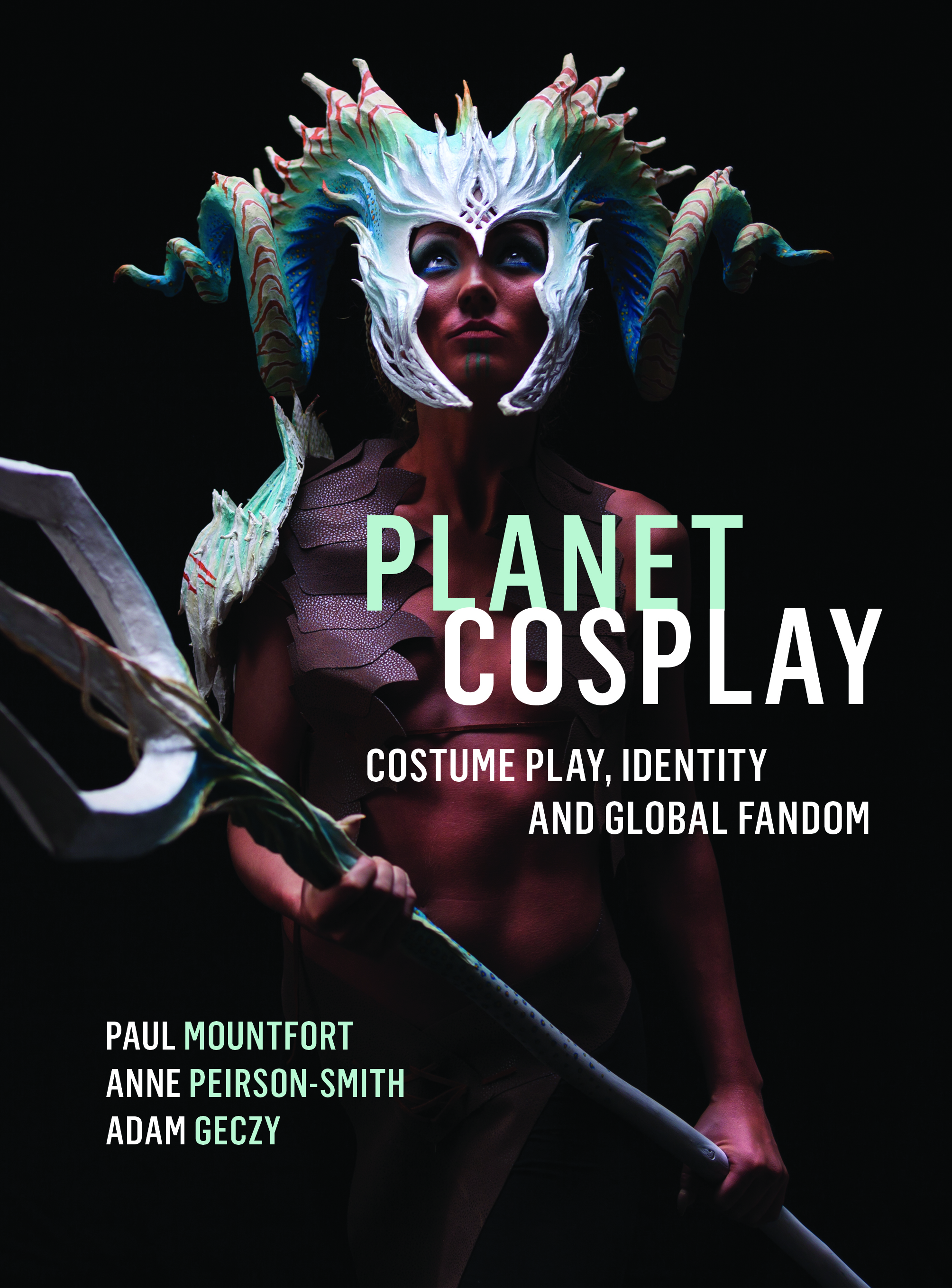
Planet Cosplay
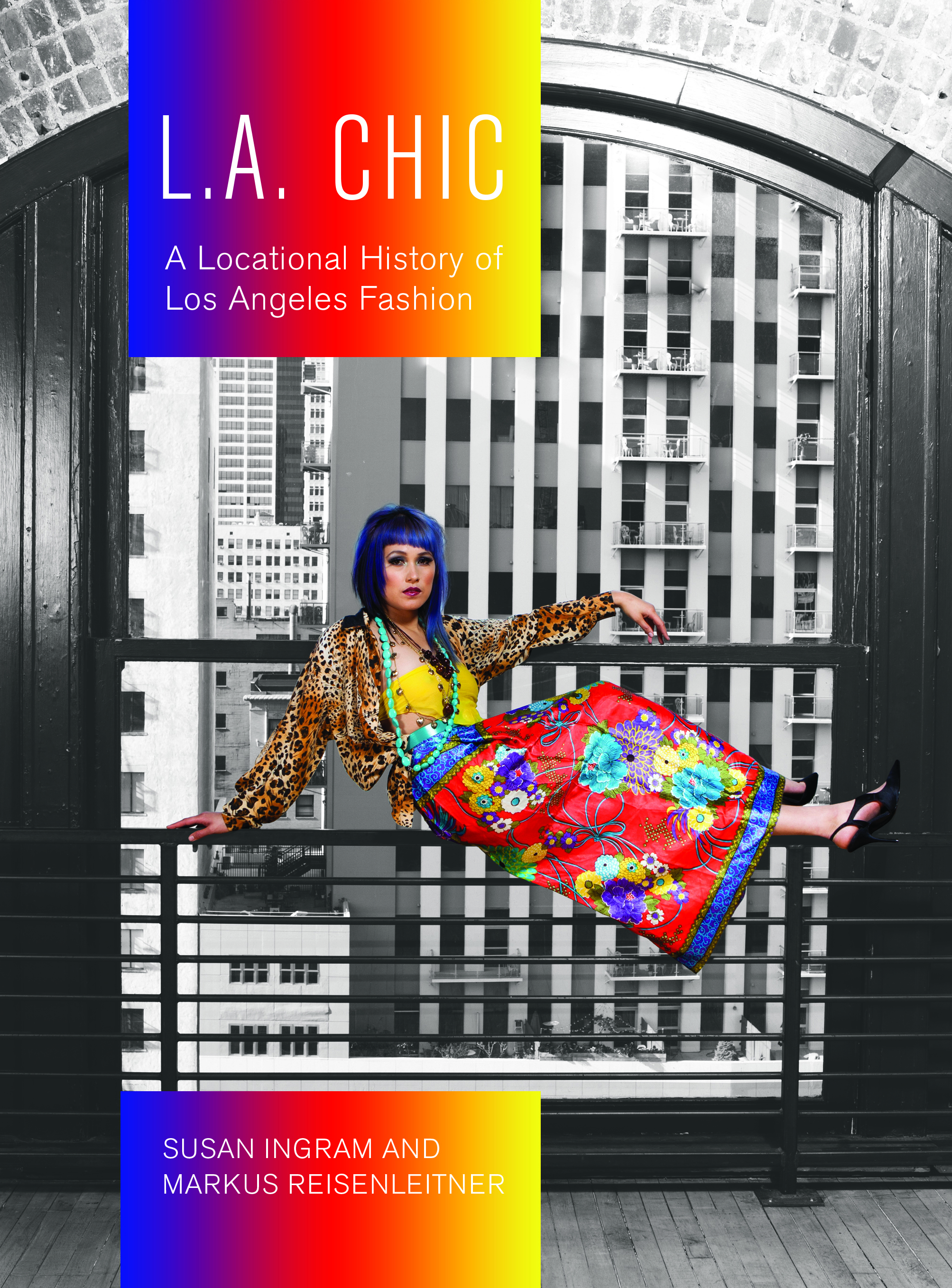
L.A. Chic
Los Angeles is undergoing a makeover. Leaving behind its image as all freeways and suburbs sunshine and noir it is reinventing itself for the twenty-first century as a walkable pedestrian friendly ecologically healthy and global urban hotspot of fashion and style while driving initiatives to rejuvenate its downtown core public spaces and ethnic neighborhoods. By providing a locational history of Los Angeles fashion and style mythologies through the lens of institutions such as manufacturing museums and designers and readings of contemporary film literature and new media L.A. Chic provides an in-depth analysis of the social changes urban processes desires and politics that inform how the good life is being re-imagined in Los Angeles.
Throughout the book Susan Ingram and Markus Reisenleitner dig up submerged and marginalized elements of the city’s cultural history but also tap into the global circuits of urban affect that are being mobilized for promoting L.A. as an example for the global multi-ethnic city of the future. Engagingly written highly visual and featuring numerous photographs throughout L.A. Chic will appeal to any culturally inclined reader with an interest in Los Angeles its cultural history and modern urban style.

Transglobal Fashion Narratives
Everywhere we look people are using fashion to communicate self and society – who they are and where they belong. Transglobal Fashion Narratives presents an international interdisciplinary analysis of those narratives. Moving from sweatshop to runway page to screen camera to blog and artist to audience the book examines fashion as a mediated form of content in branding as a literary and filmic device and as a personal form of expression by industry professionals journalists and bloggers.
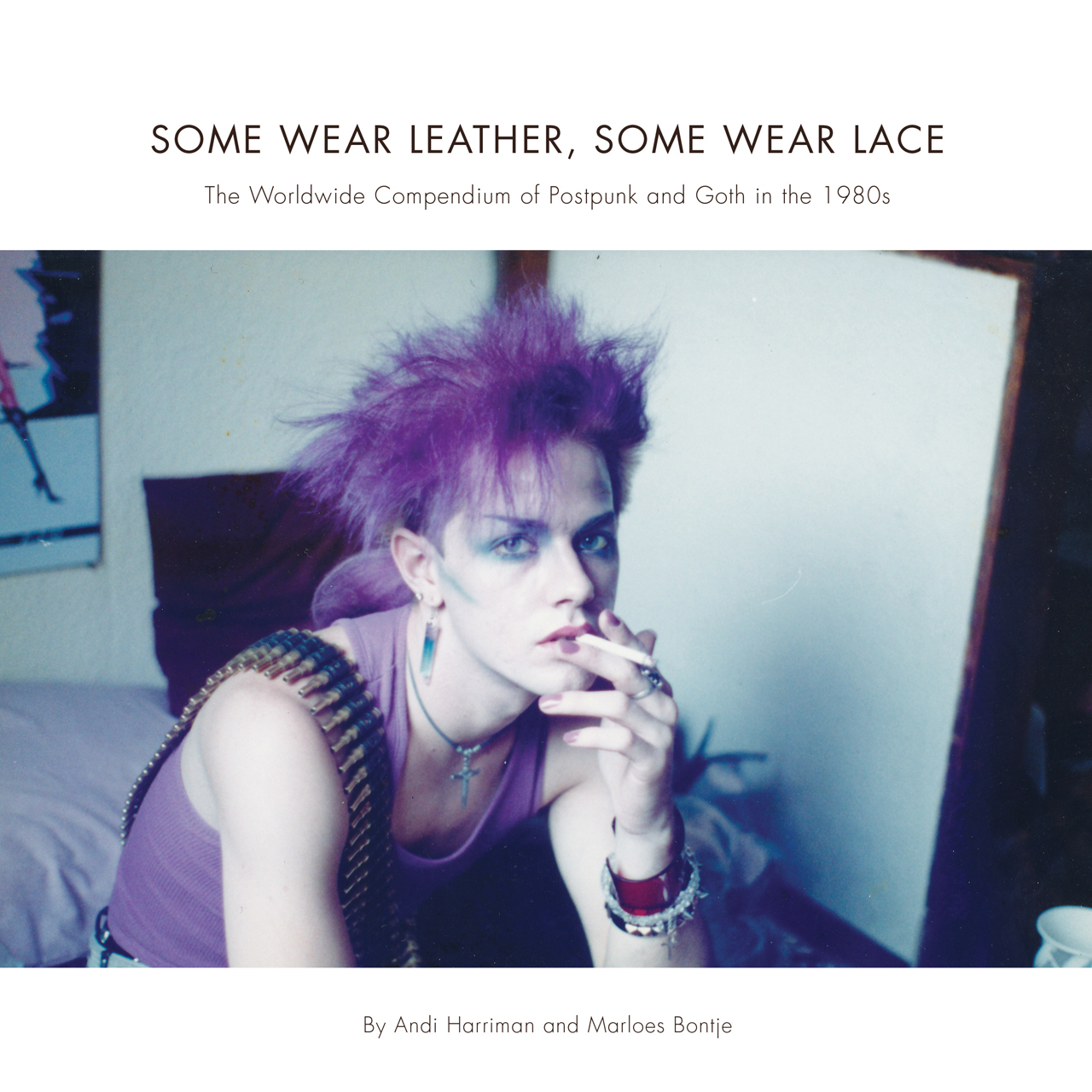
Some Wear Leather, Some Wear Lace
It was a scene that had many names: some original members referred to themselves as punks others new romantics new wavers the bats or the morbids. 'Goth' did not gain lexical currency until the late 1980s. But no matter what term was used 'postpunk' encompasses all the incarnations of the 1980s alternative movement. Some Wear Leather Some Wear Lace is a visual and oral history of the first decade of the scene. Featuring interviews with both the performers and the audience to capture the community on and off stage the book places personal snapshots alongside professional photography to reveal a unique range of fashions bands and scenes.
A book about the music the individual and the creativity of a worldwide community rather than theoretical definitions of a subculture Some Wear Leather Some Wear Lace considers a subject not often covered by academic books. Whether you were part of the scene or are just fascinated by different modes of expression this book will transport you to another time and place.

Clothing Cultures
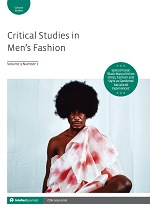
Critical Studies in Men's Fashion

Film, Fashion & Consumption

International Journal of Sustainable Fashion & Textiles

Studies in Costume & Performance
Studies in Costume & Performance aims to encourage generate and disseminate critical discourse on costume and the relationship between costume and performance. It considers costume as a symbiotic articulation of the body of the performer which is visual material temporal and performative. Whether performed live seen through the camera lens or found in an archive costume embodies and reflects the performance itself.
The journal will bring together experts in costume scenography performance fashion and curation as well as critically engaged practitioners and designers to reflect and debate costume in performance its reception in production exhibition and in academic critical discourse. Submission will include visual essays. The journal is double-blind peer-reviewed in order to maintain the highest standards of scholastic integrity.
Past and current practice is considered through the ‘reading’ of the costumed body as a communication of embodied cultural social artistic and historical narratives. As such this journal is an articulation of practice which through this process redefines practice itself.

International Journal of Fashion Studies

Luxury Studies: The In Pursuit of Luxury Journal

Critical Studies in Fashion & Beauty
Critical Studies in Fashion and Beauty is the first journal dedicated to the critical examination of the fashion and the beauty systems as symbolic spaces of production and reproduction representation and communication of artifacts meanings social practices and visual or textual renditions of cloth clothing and appearance.

Fashion, Style & Popular Culture
Fashion Style & Popular Culture is a peer-reviewed journal specifically dedicated to the area of fashion scholarship and its interfacings with popular culture. It was established to provide an interdisciplinary environment for fashion academics and practitioners to publish innovative scholarship in all aspects of fashion and popular culture relating to design textiles production promotion consumption and appearance-related products and services. Articles related to history manufacturing aesthetics sourcing marketing branding merchandising retailing technology psychological/sociological aspects of dress style body image and cultural identities as well as purchasing shopping and the ways and means consumers construct identity as associated to Fashion Style & Popular Culture are welcomed. The journal offers a broad range of written and visual scholarship and includes works done through various methods of research. We welcome conceptual theoretical and translational applied research in the areas of fashion style and popular culture. This journal hopes to stimulate new discussions in the fashion disciplines and to push the envelope of scholarship by welcoming new and established scholars to submit their works.
Download the journal's Notes for Contributors.
